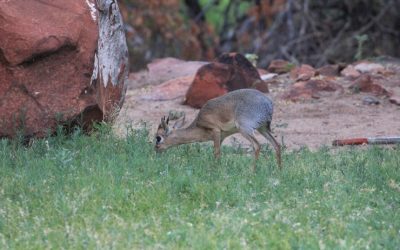Traditional Namibia Food Dishes
Traditional Namibian cuisine offers a rich and diverse culinary heritage that reflects the country’s unique culture and environment. From hearty harvest dishes to flavorful grilled meats, Namibian food is characterized by its use of locally sourced ingredients and age-old cooking techniques. Exploring these dishes provides a delicious insight into Namibia’s history and cultural identity.
Oshifima (Maize Meal) and Meat Stews
Traditional Namibian cuisine offers a rich variety of flavors characterized by hearty staples and flavorful stews. Among the most beloved dishes are Oshifima, a maize meal porridge, and various meat stews that showcase the country’s cultural heritage and culinary diversity.
- Oshifima (Maize Meal): Oshifima is a fundamental food in Namibia, made from ground maize and cooked into a thick, porridge-like consistency. It serves as a staple side dish accompanying many main courses, especially meat and vegetable dishes. Its simplicity and versatility make it an essential part of traditional meals.
- Meat Stews: Namibia’s meat stews are hearty and flavorful, often prepared with beef, goat, or game meats. Common ingredients include onions, tomatoes, and various spices, which create rich sauces to complement the tender meat. These stews are typically enjoyed with oshifima or other side dishes, reflecting the importance of meat in Namibian culinary culture.
Kapana (Grilled Meat)
Traditional Namibian cuisine offers a variety of flavorful dishes that reflect the country’s rich cultural heritage. One popular and iconic food is Kapana, which is a traditional Namibian grilled meat. Typically, Kapana consists of fresh beef or other meats that are seasoned with Namibia’s local spices and then grilled over open flames. The dish is often served with onions, chili, and sometimes a side of traditional maize porridge or bread. It is commonly enjoyed at social gatherings, markets, and street stalls, making it a favorite among locals and visitors alike. The smoky aroma and tender, juicy meat make Kapana a must-try authentic Namibian food experience, capturing the essence of Namibia’s vibrant culinary traditions.
Mahangu Porridge
Traditional Namibian food reflects the rich cultural heritage and diverse culinary practices of the country. One popular dish is Mahangu Porridge, a staple food made from millet or pearl millet known locally as mahangu. This hearty porridge is a vital part of Namibian cuisine and is enjoyed across various communities.

- Mahangu Porridge is typically prepared by boiling millet until soft and then stirring it to achieve a smooth, thick consistency.
- It is often served as a breakfast food or as a side dish accompanying meat or vegetable stews.
- In traditional settings, it can be eaten with milk, sugar, or savory accompaniments like meat gravy for added flavor.
- Mahangu is not only valued for its nutritional benefits but also for its cultural significance, symbolizing rural life and traditional practices.
Vetkoek (Fried Bread)
Traditional Namibian cuisine offers a variety of hearty and flavorful dishes, reflecting the diverse cultural influences within the country. Among these, Vetkoek stands out as a popular and beloved street food, known for its crispy exterior and soft interior.
- Vetkoek (Fried Bread): Vetkoek, meaning “fat cake” in Afrikaans, is a traditional Namibian fried bread made from a simple dough of flour, yeast, sugar, and water. The dough is shaped into small balls or flat discs and deep-fried until golden brown. Often served with sweet fillings like honey or jam, Vetkoek can also be enjoyed as a savory snack, filled with minced meat, vegetables, or other flavorful ingredients. It is a common dish during gatherings and festivals, symbolizing warmth and community in Namibian culture.
Unique Ingredients in Namibian Cuisine
Namibian cuisine is a vibrant blend of traditional flavors and unique ingredients that reflect the country’s diverse cultural heritage and natural environment. From adventurous use of local game meats to distinctive plant-based staples, Namibia’s culinary scene offers a fascinating array of ingredients that set it apart. These unique components not only define the country’s food identity but also showcase the rich biodiversity and indigenous practices embedded in Namibian cooking.
Mahangu (Pearl Millet)
Mahangu, also known as Pearl Millet, is a staple ingredient in Namibian cuisine that holds cultural and nutritional significance. This hardy grain thrives in Namibia’s arid climate and has been cultivated for generations, providing a vital source of energy for local communities. Its versatility makes it a fundamental component in various traditional dishes, showcasing the unique flavors and culinary techniques of Namibia.
- Mahangu is often ground into flour to prepare porridge, a common breakfast food enjoyed by both children and adults.
- It is used to make a traditional fermented dish called “Mahangu porridge,” which is sometimes flavored with milk or sugar.
- The grain can also be cooked whole and served as a side dish, similar to rice or maize porridge.
- In Namibia, Mahangu is often combined with vegetables, meats, or beans to create hearty stews and traditional dishes such as “Omaere.”
- Its nutritional benefits include being rich in fiber, proteins, and essential minerals, making it a vital part of a balanced diet in Namibian culture.
Oshifima (Maize Meal)
Namibian cuisine features a variety of unique ingredients that reflect the country’s rich cultural heritage and natural environment. One of the most iconic staples is oshifima, a traditional maize meal that holds a special place in Namibian food culture. Made from coarse-ground maize, oshifima is celebrated for its hearty and filling nature, often served as a main dish accompanied by various stews, vegetables, or meats.
The maize used in oshifima is often locally grown and marked by its distinct texture and flavor, which contribute to the dish’s unique taste. Unlike more refined maize products, oshifima’s coarse consistency provides a rustic feel and a satisfying mouthfeel. This ingredient symbolizes sustenance and community in many Namibian households, and its preparation varies slightly across regions, reflecting local culinary traditions.
Hunting and Wild Game Ingredients
Namibian cuisine is distinguished by its unique use of ingredients sourced from the country’s rich natural environment, particularly its wild game and indigenous plants. Traditional dishes often incorporate meats such as kudu, springbok, or oryx, which are hunted sustainably and celebrated for their lean, flavorful qualities. These game meats are central to many culinary traditions, offering a distinctive taste profile that sets Namibian food apart from other cuisines.
Additionally, Namibian culinary practices include the use of native herbs and wild plants like mopane worms, which are a nutritious delicacy, and desert-adapted vegetables that thrive in the arid climate. These ingredients not only contribute to the local flavor but also reflect the deep connection between the land and its people. Utilizing such rare and traditional components, Namibian cuisine offers a rich tapestry of flavors rooted in the country’s wild landscapes and hunting heritage.
Popular Snacks and Street Food
Namibia offers a vibrant array of popular snacks and street foods that reflect its rich cultural heritage and diverse culinary traditions. From savory bites to sweet treats, street vendors across the country serve up an enticing selection of local favorites that capture the essence of Namibian flavors. These foods not only provide delicious experiences but also offer a glimpse into the everyday life and culinary identity of Namibia.
Veldkorn (Bush Cucumber Snacks)
Veldkorn, also known as Bush Cucumber Snacks, is a popular delicacy from Namibia that highlights the rich and diverse flavors of the region. This unique snack is made from the wild bush cucumber, a native plant found in the Namibian veldt, which is often harvested and prepared in various tasty forms. Its crunchy texture and refreshing taste make it a favorite among locals and travelers alike.
In Namibia, street food is a vibrant part of daily life, with vendors offering a wide array of quick and flavorful snacks. Popular street foods include boerewors rolls, which feature traditional sausage, as well as roasted maize and fresh fruit. Veldkorn fits perfectly into this vibrant street food scene, often enjoyed as a healthy and cooling snack during the hot Namibian days.
The popularity of Veldkorn and other street foods in Namibia showcases the blending of indigenous ingredients with local culinary traditions. These snacks not only provide a taste of Namibian culture but also reflect the resourcefulness of people who utilize the natural bounty of their environment to create delicious and distinctive food experiences. Whether enjoyed from a street vendor or prepared at home, Veldkorn offers a delightful glimpse into Namibia’s culinary heritage.
Boerewors (Sausage)
Boerewors is a traditional and beloved street food staple in Namibia, renowned for its rich flavors and cultural significance. This savory sausage is typically made from a mixture of beef, game meat, and spices, all carefully blended to create a unique taste that is enjoyed across the country. It is often grilled to perfection, offering a smoky aroma and crispy exterior that makes it a popular snack among locals and visitors alike.
- Boerewors is commonly served in a bun or directly from the grill, often accompanied by local side dishes such as pap (maize porridge) or chakalaka (spicy vegetable relish).
- The sausage is a key component of Namibia’s festive and street food scenes, especially at markets, festivals, and outdoor gatherings.
- In addition to boerewors, popular Namibian street snacks include vetkoek (fried bread), samosas, and dried meat, showcasing the country’s diverse culinary influences.
- Street vendors and food stalls specializing in boerewors often feature freshly prepared options, ensuring a delicious and authentic Namibian food experience.
Mandazi (Sweet Fried Dough)
Mandazi, a popular street food and snack in Namibia, is a delicious sweet fried dough that is enjoyed by many. These golden-brown treats are often made from a simple mixture of flour, sugar, yeast, and coconut milk or water, then deep-fried to perfection. Known for their airy, slightly chewy texture and subtle sweetness, mandazi are a beloved snack at markets, festivals, and roadside stands across Namibia.
Often enjoyed with a cup of tea or coffee, mandazi are versatile and can be flavored with ingredients like cardamom, cinnamon, or grated coconut to enhance their taste. This street food exemplifies the rich culinary traditions of Namibia, blending local ingredients with simple cooking techniques to create a snack that is both satisfying and deeply rooted in local culture.
Traditional Beverages
Traditional beverages play a vital role in Namibia’s rich cultural heritage, offering a glimpse into the country’s diverse customs and social practices. These drinks are often crafted using locally sourced ingredients and have been passed down through generations, reflecting Namibia’s unique culinary traditions. From fermented brews to aromatic infusions, traditional Namibian beverages are an integral part of celebrations, rituals, and daily life.
Omagungu (Maize Beer)
Omagungu, also known as maize beer, is a traditional beverage enjoyed in Namibia. It is a fermented drink made primarily from maize or millet, which gives it a distinct flavor and cultural significance. This beverage is often prepared during social gatherings, celebrations, and ceremonies, serving as a symbol of communal unity and tradition. The brewing process involves fermenting the grain mash for several days, resulting in a mildly alcoholic drink that is both refreshing and culturally meaningful. Omagungu holds a special place in Namibia’s culinary heritage, reflecting the country’s agricultural practices and social customs.
Tea and Coffee Traditions
Traditional beverages such as tea and coffee hold a significant place in Namibian culture, serving as symbols of hospitality and social connection. Local tea traditions often involve brewing herbal infusions with indigenous plants, which are cherished for their medicinal properties and calming effects. Coffee, introduced through colonial influence, is increasingly enjoyed in cafes and homes, often prepared using drip methods or in traditional ways that emphasize communal sharing. In Namibia, these beverages are more than just drinks; they are an integral part of social gatherings, celebrations, and daily life, reflecting the diverse cultural influences and the country’s rich heritage.
Fruit Juices and Local Refreshments
Namibia offers a variety of traditional beverages, fruit juices, and local refreshments that reflect its rich cultural heritage and natural resources. These drinks are often made from locally available fruits, herbs, and grains, showcasing the country’s diverse agricultural landscape.
Traditional Namibian beverages include the popular Malt beer called “Omaanda,” which is brewed from millet or sorghum and enjoyed during special occasions. Another well-known drink is “Amarula,” a creamy liqueur derived from the marula fruit, native to the region. Indigenous tribes often prepare herbal teas using local herbs and plants, believed to have medicinal properties.
Fruit juices are homemade and use fresh, seasonal produce like oranges, mangoes, guavas, and bissap (hibiscus). These juices are usually served chilled and are a refreshing way to stay hydrated in Namibia’s warm climate. Bissap juice, in particular, is enjoyed across the country for its vibrant red color and tangy flavor, often sweetened with sugar or honey.
Local refreshments also include traditional fermented drinks such as “Oshikwange,” a millet-based fermented beverage that is both nourishing and culturally significant. These drinks are often prepared in households and communities, preserving traditional recipes and brewing methods passed down through generations.
Overall, Namibia’s traditional beverages and fruit-based drinks offer a glimpse into the country’s rich cultural practices and connection to nature, providing both nourishment and a sense of community.
Festive and Special Occasion Foods
Namibia’s festive and special occasion foods are a celebration of its rich cultural heritage and diverse culinary traditions. These dishes are often crafted with local ingredients and hold deep cultural significance, bringing families and communities together to mark important events and holidays. From hearty stews to flavorful sweets, Namibian festive foods reflect the vibrant history and unique flavors of the region.
Meat Braais during Celebrations
Festive and special occasion foods hold a significant place in Namibian culture, particularly during celebrations where traditional dishes bring people together to share in the joy of the event. Meat braais, or barbecues, are a central element of many Namibian festivities, showcasing the country’s deep-rooted love for grilled meats and communal dining. During celebrations such as Independence Day, weddings, or family gatherings, a variety of meats like beef, goat, and game are prepared over open flames, often seasoned with local spices and marinades that highlight Namibia’s rich culinary heritage. These meat braais not only serve as delicious meals but also as a symbol of unity, tradition, and hospitality, emphasizing the importance of communal sharing in Namibian festivities.
Traditional Wedding Dishes
Namibia’s festive and special occasion foods are a reflection of its rich cultural diversity and traditional heritage. During celebrations such as weddings, numerous traditional dishes are prepared to honor the occasion and bring together family and community members. One prominent dish is Oshifima, a maize porridge that is often served as a staple at festive gatherings, symbolizing unity and sharing. Another popular dish is Kapana, spicy grilled meat that is commonly enjoyed during celebrations with friends and family. Traditional wedding dishes include Dorada fish, often prepared with local herbs and spices, and served with side dishes like Mahangu (pearl millet) porridge or maize meal. These foods not only showcase Namibia’s agricultural bounty but also embody the warmth and hospitality that characterize Namibian culture during special occasions.
Healing and Ritual Foods
Namibia offers a rich culinary tradition that reflects its diverse cultural heritage, especially during festive and special occasions. Traditional foods such as potjiekos, a slow-cooked stew prepared in a cast-iron pot, are often enjoyed during celebrations, symbolizing community and togetherness. Special occasions also feature dishes like kapana, grilled meat seasoned with local spices, which serve as festive staples shared among family and friends.
Healing and ritual foods hold significant importance in Namibian culture, often used in ceremonies and traditional practices. Rooibos tea and marula fruit are valued for their medicinal properties, believed to aid in healing and boost health. In some communities, amasi, a fermented milk product, is consumed in rituals to promote health and fertility. These foods are not only nourishment but also carry cultural meanings, linking communities to their ancestral traditions and spiritual beliefs.





0 Comments